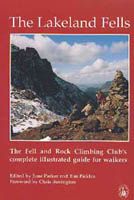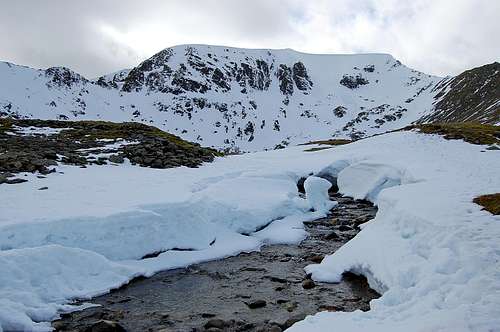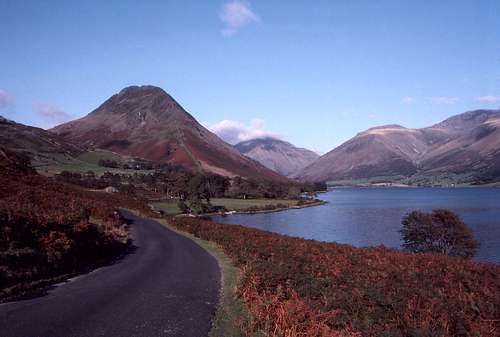|
|
Area/Range |
|---|---|
|
|
54.60707°N / 3.14484°W |
|
|
Hiking, Mountaineering, Trad Climbing, Sport Climbing, Toprope, Scrambling |
|
|
Spring, Summer, Fall, Winter |
|
|
3206 ft / 977 m |
|
|
Overview
This page has been adopted and a major update is underway
The Lake District National Park is the crown jewel of the English countrside. Popular with tourists and Brits alike it is the capital of English climbing and fell walking. All of England's largest mountains are contained within the park including England's tallest mountain Scafell Pike.
The Lakes are a playground for the mountain lover. The park is composed of literally hundreds of fells most of which can be accessed in a day from one of the many villages that dot the park. Some of the more notable mountains include; Scafell Pike, Helvellyn, Great Gable and Blencathra. The Lake District is famous for it's beauty but also for the notoriously fickle weather. Expect to see some form of precipitation on any day of the year.
For the culturally inclined the Lakes are most famous for the poet William Wordsworth. Wordsworth lived in Dove Cottage in Grasmere for a number of years and the cottage has since been preserved and open to the public.
The Lakes have been popularized in the modern era by the prolific rambler, author and illustrator, Alfred Wainwright. Wainwright was well known for his love of the fells and the wildlife there within. He is best known for authoring a series of books in the 1950s and 60s entitled, "A Pictoral Guide to the Lakeland Fells". These guides which include hand drawn maps of the fells have become the standard reference material for many Lakeland hikers. The seven books describe a total of 214 fells which have collectively become known as the "Wainwrights". Many a hardy walker has a goal of bagging all 214 of these peaks.
The Mountains
There are 4 peaks in England above 3000 feet in height all of which are located in the Lake District.Scafell Pike, 3206 ft
Scafell Pike is the tallest mountain in England and is located in a particularly rugged corner of the Lakes. There are a number of routes to the summit ranging from walk-ups to serious scrambles. This is not a mountain to be underestimated. Route finding can be difficult in bad weather so ensure that you always carry a map and compass.
Scafell, 3162 ft
Though the shorter of the two, Scafell is considered a more serious ascent than it's neighbor Scafell Pike.
Helvellyn, 3116 ft
Helvellyn is famous for it's sublime Striding Edge. This grade 1 scramble is one of the classic climbs of the Lakes. Helvellyn can be climbed in a half day from Ullswater.
Skiddaw, 3054 ft
Skiddaw rises majestically above the northern side of Keswick. This mountain is popular with both hikers and mountain bikers.
Mountain Activities
Hiking
Scrambling
Rock Climbing
Winter Climbing
The Lakes
Climate
There is a reason there are still so many lakes in the Lake District; you can expect to be rained on any day of the year here and you often will be. That said, the Lake District can have very pleasant weather in the summers. Expect temperatures to range from 20 to 30 degrees Celsius on a typical July or August day. The Lakes also experience fairly mild winters due to the location next to the Irish Sea. You can expect an average temperature of around 7 degrees Celsius in the winter months. The combination of mild winters and long summer days makes the Lakes an all year round destination for the fell walker. Many of the fells will receive snow in the winter making for some fun snow climbs on some of the classic summer time scrambles.It is wise to always be prepared for various types of weather when hiking in the Lakes. A waterproof shell is appropriate at any time of the year and it is advisable to carry an Ordinance Survery Map and compass as visibility can deteriorate quickly when a storm rolls in.
Geology
Wildlife and Conservation
Wildlife
Nature Conservation
Mountain Conditions
This section displays the mountain conditions for the Lake District. The information is provided by the Met Office and is issued twice per day. It is valid for the full 24 hour period on each day. Click on the widget for maps and further information. |
This Lake District weather forecast is generated by the Met Office Weather Widget |
When To Climb and Essential Gear
|
The Lake District is busiest from late Spring to early Autumn and some mountains can get very busy. Mountains such as Scafell Pike and Helvellyn in particular get very busy due to their attraction to tourists and ease of access. Although the weather is usually warm throughout the summer showers are common, and full waterproofs and quality walking boots are essential for all expeditions. In winter the area is quieter as most tourists prefer to visit the area when it's warm. In winter conditions an walking ice axe and crampons will need to be carried and if an attempt is to be made on the harder routes, equipment such as helmet, crampons, small rack and rope will probably be essential. For true winter routes specialist winter and ice climbing equipment is necessary and owing to the unpredictable conditions of snow and ice on the mountain these lines should only be attempted by those with experience of winter mountaineering techniques. Despite the area's comparatively low altitude it can get very cold with temperatures dropping to near Arctic levels, many inexperienced walkers and climbers have been caught out in these conditions most are rescued safely by mountain rescue teams however occasionally the consequences are more serious, and every year casualties occur. |
Getting There
|
Thanks to the close proximity of the M6 motorway, the Lake District is one of the most easily accessible of Britain's National Parks. Exiting the window at Junction 36 is probably the best means of reaching the southern Lakes. From here towns such as Kendel, Windermere and Ambleside are easily reached along the A591. These are good centres for exploring the mountains around Wasdale, Langdale, and Eskdale. Junction 40 is better for the northern Lakes, with Keswick just a short drive along the A66. The town sits in the shadow of Skiddaw and Blencathra, while Helvellyn sits just a little to the south and Borrowdale a little to the west. The Lake District is also served by a number of railway stations, with stops in places such as Windermere and Kendal in the east and Workington, Whitehaven and Grange over Sands along the southern and western coast. |
Mountain Rescue
|
The Lake District Search and Mountain Rescue Association (LDSAMRA) comprises the twelve teams across Cumbria and the Lake District. They are mostly staffed by local volunteers and funded primarily by public donations. They operate with the assistance of local Police, and in serious situations the Royal Air Force. The services work is not just restricted to mountain and wilderness rescue; often teams are utilised by the local police to search for missing or vulnerable persons in the community. The Mountain rescue services are: Further information can be found from the Lake District Search and Mountain Rescue Association and Mountain Rescue England and Wales. In emergency situations Mountain rescue services can be contacted by ringing one of the UK's standard emergency service numbers: 999 or 112 |
Red Tape and Access
Unlike the national parks of North America and certain parts of Europe, there are no permits required for entry into the park, no visitor limits or any other kind of red tape designed to restrict access. Since the passing of the Countryside and Rights of Way Act (CRoW) 2000, the public have the right to access almost all the land within the national park boundary regardless of ownership. Open access land is denoted by the signs below.
|
|
For climbers, hill walkers and mountaineers, the British Mountaineering Council (BMC) runs a Regional Access Database, which holds mountain/crag specific information on matters of conservation and access, including issues such as nesting restrictions, nature designations and preferred parking: If you are in any doubt about any particular access arrangement, or need to report an incident, you should contact your local BMC Access Representative or the BMC office directly: office@thebmc.co.uk. |
Where to Stay
Camping and AccommodationGiven the size of the area, attempting to list a fair selection of camp sites, hostels, B&Bs, hotels and holiday cottages seems a little difficult, and anyway, there’s a huge supply of accommodation in the Lake District and surrounding area and finding something that fits your needs shouldn’t be a problem. For a range of accommodation it’s worth checking out some of the following sites:
For everything else and more see Visit Cumbria |
Post Climbing Attractions
There are a number of beautiful villages and towns scattered throughout the Lakes. Buttermere, Grasmere, Braithwaite, Ambleside, Keswick and Windermere are all well worth a visit. At the heart of each town is usually a good pub or two where you can find a hot meal and a nice local ale. For the ale aficionado there are a number of local breweries that offer a range of fantastic tasting beers. The Jennings brewery in Cockermouth is the most well known but don't miss out on the other locals which include Coniston, Hesket Newmarket, Barngates and Yates.Other attractions include the National Mountaineering Exhibiton at Rheged, the Honister Slate Mine and lakes Windermere, Ullswater and Derwentwater.
Maps
Guidebooks
External Links
Lake District National Park Authority Association of National Park Authorities Hiking, Climbing and Mountaineering Organisations and Companies British Mountaineering Council Weather Mountain Weather Leke District Tourist Information Travel Accommodation Maps and Guidebooks Cordee Travel and Adventure Sports Bookshop Wildlife and Conservation |





























